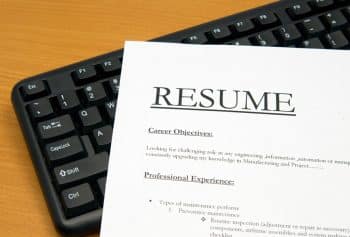Career Advice
This Article Talks About:
Home » Resume | CV Writing » How to write a great IT resume
How to write a great IT resume
https://www.whatjobs.com/info/resume-cv-writing-advice/how-to-write-a-great-it-resume

An excellent resume is a necessity in today’s tough employment market.
To be invited for a job interview, as a job seeker, you must peak the interviewer’s interest.
To get to the interview stage, you must have a great resume.
A good resume is vital in every industry, but in a competitive area like IT, it matters even more.
It is fiercely competitive, but there are things you can do to get ahead.
Read on to find out.
READ MORE: How To Write A Good Resume
How to Write a Great Resume
Like any other hard and soft skills you could develop in your life, a solid CV may take a while to create.
But it’s worth doing if it lands you your dream job, take the time to get it right.
Many people make the error of hurriedly putting up a resume.
This could lead to terrible consequences.
Typos kill resumes, they make you come across as careless.
If you work in IT and are a coder or software developer, no one’s going to want someone who can’t check what they’ve written.
Trial and Error
You can spend a good amount of time coming up with the best resume for one particular job, but make you do some research on the best designs that will catch the interviewers.
Remember, the interviewer is likely to be inundated with CVs, so yours needs to stand out.
You also need to write a killer cover letter – learn how to here.
Always create a rough draft before creating the final copy.
When your resume is still in its early stages, having someone you can trust review it will allow you to receive a second opinion.
You want to be receptive to this critique and always seek out an entirely trustworthy person.
Writing a Great IT Resume Is The Best Way to Get a New Job
Think About Your Advantages
Even though it can seem simple, your IT resume must solely highlight your skills.
For example, highlight your expertise as a database developer on your resume and if you excel at working with clients or other end users.
The goal is to demonstrate to your prospective employer all of your skills and the reasons they must hire you.
READ MORE: Writing A Good Resume With Professional Help
List Achievements Over Responsibilities
You probably had a list of duties or responsibilities from previous positions.
Your resume should include these, but how you word them is important.
They ought to be phrased as accomplishments as opposed to obligations.
A duty might be anything like “Creating code fixes to major company systems.”
This might appear appropriate because it is specific and reflects what you do.
Maybe phrase it as an accomplishment, like: “Supported and addressed problems with the company’s key, large-scale systems, preventing substantial financial losses and implementing cost savings.”
Include References
Ask your previous employers to give you recommendations for your work on social media platforms like LinkedIn.
Anybody you’ve worked with can generally write a testimonial, but certainly only pick peo you believe will write a positive one.
People who can provide you a review that you can put on your resume include clients, end users, bosses, and co-workers.
It’s an excellent approach to demonstrate to a potential employer that others think highly of both you and your work.
Use words that IT professionals and non-IT professionals can understand
IT in an industry packed with jargon and acronyms.
It’s important to be able to explain that to someone who isn’t in the area who might not have the knowledge you have.
It’s likely a recruitment team might take the first look at your resume, and if it comes across as gobbledegook, you’re not going to get very far.
It could also be read by hiring managers, top execs, the technical team, or the team where the job was posted.
What this means is both IT professionals and non-IT staff should be able to grasp the language utilized in the resume.
This means that you shouldn’t write in IT jargon that is only understood by other techies – you might as well write it in code!
Make sure it is readable and understandable to all employees, regardless of their position.
They won’t fully understand what you’re attempting to convey if they are having any trouble understanding it. You should have an attention-to-detail while writing this section.
A great idea would be is to ask a family member or friend to have a look at it and see if they understand it – if they don’t, tone down the jargon.
Avoid mentioning outdated technologies

IT is an industry that forever changing.
Technologies and procedures are always evolving and being developed.
To try to get an advantage in the market, businesses need to stay current with these.
Your skill set may be extremely extensive, depending on how many years of experience you’ve in the IT sector.
The number of programming languages you are familiar with might be 10 or 20.
It’s possible that you have knowledge of configuring or utilising decades-old software.
That’s all well and good, but an employer in 2023 isn’t going to be that interested in your mastery of a piece of kit no one’s used since the late 1990s.
Grammar and Spelling should be flawless
This is a crucial topic that applies to all resume types, including IT resumes, as well as other written materials. On your resume, your spelling and syntax should be flawless.
Don’t misspell terms like “technology names” or “company names,” especially acronyms, “certifications or qualifications you’ve acquired,” and particularly “people’s names” (e.g. references)
Even if you know what you mean, spelling mistakes on a resume are incredibly unprofessional.
Use your spellchecker or a writing tool like Grammarly to ensure your resume is error-free.
If it’s full of typos, it’s heading for the bin or the “deleted” email section.
Once you’re done, read it over for errors.
Then, read it again.
Then, get someone else to read it.
READ MORE: How To Write A Cover Letter
Make It Readable
It is crucial to format your resume because it enables you to provide key details in a reasonable and understandable order.
The use of underlines, boldface, italics, and all caps will make it simple for the potential employer to navigate your resume.
When creating your resume, consistency is crucial since it makes the content easier to understand for the reader. In such cases, using online resume builders is a time and energy saver.
You can easily create a tailored professional resume with up-to-date design. Looking at IT resume examples or samples will give you an insight about the preferred style.
Make sure you add your contact details
Usually start your resume off with a personal statement.
Keep in mind that your prospective employer needs to have your name, address, phone number, and email address. Consequently, place this data at the top of your resume to start.
You shouldn’t include in your resume any personal information about yourself, including things like your marriage status, religion, age, or political stance, and your interviewer wouldn’t expect you to.
Promote Yourself
It is crucial you emphasize the qualifications and work experience that are most important to the position for which you are seeking.
You can use titles like Relevant Experience, Leadership Experience, or Business Experience in this section.
The objectives and an overview of your qualifications are two more details you might include in this resume section.
It’s crucial you concentrate on the requirements of the employment you’re applying for.
Adding necessary certifications from the like of Microsoft or Google will show your passion for this field and prove your professional expertise to prospective employers.
Remember to keep your resume consistent by displaying your information logically and consistently.
Include All Your Academic Credentials and Licences
Your academic achievements should be highlighted at the top on your resume if you are seeking for an internship.
This is due to the fact that as a learner, education must be listed as your first major category since it is your most current full-time commitment.
The order of your education should, however, follow the statement of your goals if you have gained any practical job experience.
Your References
It’s crucial to list two to three references on your resume.
These referees must be people you know and trust, but cannot be family members.
You could mention your mentor in your career, your academic advisor, or your former boss or supervisor.
A Resume Is Incomplete Without A Cover Letter
Job applicants frequently struggle with the cover letter writing process.
One of the major obstacles for the typical job applicant is their inability to compose one properly. Perhaps because a cover letter needs originality and strong writing abilities, as opposed to a resume, which simply lists your credentials in a sensible format, so many people find it extremely challenging to study and perfect.
The cover letter is a crucial component of any job application. Knowing how to properly compose one is crucial because it informs your prospective employer of your desire to seek for a position with them.
Knowing how to compose a cover letter will enable a person to effectively communicate not only his desire to join the organisation but also the reasons he is the ideal candidate for the post. Among the crucial details you must provide are your credentials, qualifications, and work history.
Remember that every cover letter doubles as a marketing document. You must be capable of writing it cleverly and professionally.
Find more advice on writing cover letters here.















